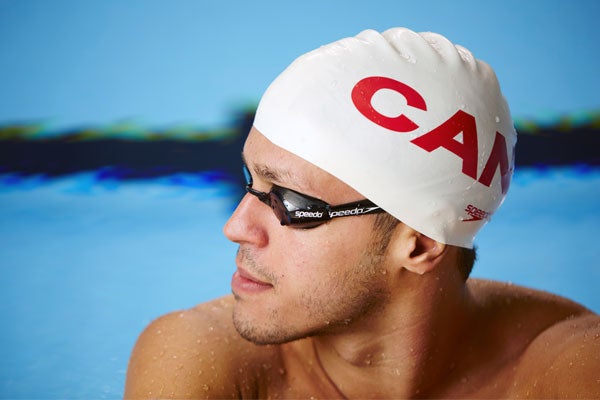
The legacy of the Toronto 2015 Pan Am/Parapan Am Games
Published: August 4, 2015
In the lull between the Pan Am Games and Parapan Am Games speculation is building that Toronto may bid to host the 2024 Olympic Games.
The Toronto 2015 Pan Am/Parapan Am Games helped push completion of some major infrastructure projects in Toronto and the surrounding region. But the Olympic Games are known for their cost-overruns. Should Toronto follow the lead of Rome, Paris, Hamburg and Budapest and make a bid? Or take heed of Boston's decision to withdraw from the fray?
Matti Siemiatycki, an associate professor in U of T’s department of geography and planning, spoke with writer Noreen Ahmed-Ullah about the legacy of the Toronto 2015 Pan Am/Parapan Am Games and the importance of weighing options before bidding on another major sports event.
What do you think about Toronto putting in an Olympic bid?
We should not rush a decision during the honeymoon period following the Pan Am Games. What is needed now is a careful assessment of the benefits and costs of the Pan Am Games, and a public discussion about the legacies that we would hope to leave behind from a future Olympics.
From the Pan Am Games, we now have a legacy of sports facilities spread across the region, as well as a new mixed-use neighbourhood and some new transit facilities. But hosting the Olympics would still have considerable costs: building a new Athletes Village, expanding the size of some Pan Am venues, and potentially building an Olympic Stadium. Given these major costs, what legacy would we hope to leave? What makes hosting the next event more than a very expensive two-week party?
Finally, we need a frank evaluation of our chances of actually winning the bid to host the 2024 summer Olympics. The bidding alone is reported to cost somewhere in the order of $50 million to $60 million, money that could very well be spent elsewhere. And these contests are highly political, with the games not necessarily going to the best technical bid. So we need to consider: what are our real chances?
What will be the legacy of the Pan Am Games?
The big thing is infrastructure. The most noticeable and I think transformational change that we’re going to see is Athlete’s Village in the West Don Lands. Once the Pan Am Games came, Waterfront Toronto decided they were going to put Athlete’s Village there, and it expedited the transformation of that neighborhood. It’s gone from being a post-industrial area where there wasn’t a whole lot of action to a nearly-finished neighborhood which is beautifully built in terms of design and integration of mixed uses. It’s really expedited the revitalization of that area by 20 years.
We’ve also gotten sports and recreation infrastructure across the region. At U of T campuses alone, there’s the swimming facility at Scarborough, the Goldring Centre for High Performance Sport, the field hockey field. And there’s the Velodrome and the Tim Horton’s field in Hamilton. All of these are sports stadiums and sporting facilities that probably wouldn’t have gotten done otherwise. They’ve now created an important infrastructure legacy.
There has been some investment in transportation, and that’s a good thing. The Union Station revitalization also got expedited. That had been on the books for a long time; I guess the Pan Am Games coalesced to make that project a higher priority and get it funded.
Why do you need big events like the Pan Am Games or the Olympics to get large projects completed?
It sharpens the focus of everyone involved and gives them a firm deadline. There is the lure of international attention and tourists. It's kind of like throwing a party. If you know the party is going to be at a certain date and time, you have to have your house cleaned. You want to have any landscaping finished or the garbage taken out before people arrive. Everyone understands they have to have these things finished in advance because people are going to see it.
There’s also politics. All across the country different regions are vying for money from their provincial government and their federal government. If there’s a major event that’s going to put Canada in the international spotlight, then all of a sudden that jurisdiction shoots to the top of the pile, to the top of the agenda. The government starts replying to phone calls and projects become much more important because now these are not just projects of local significance but national significance. We’ve seen places hosting these major events in Canada just getting showered for money with infrastructure. It’s that combination of the world is coming and we have a firm deadline that gets everyone’s attention and pushes them forward to get things done.
Now the question is are you building the right projects, are you building projects that are only good for those two or three weeks, or are you building projects that will benefit your community in the long term? That’s the flip side to this rush to invest. It’s making sure that you just don’t spend the money, and you don’t have your city looking nice for two weeks, but the long term perspective on how these things are used is also put in play.
How have we fared in Toronto? Did we choose the right projects?
I think for the most part we did, mainly because there is so much to do to catch up for the lost generation of investment in infrastructure in the region. I think that some of the sporting facilities will be highly valuable. The pool at University of Toronto Scarborough, the way it’s conceived as both a university facility and a community facility, I think is a real opportunity. And with the athlete’s village, the quality urban design, mix of building uses and integration of new parks means that it has the potential to become a vibrant future neighbourhood.
We also got some important transportation projects finished. Perhaps ironically, the greatest legacy from the games may be something that was only temporary: the implementation of hundreds of kilometers of new HOV lanes. After the initial grumbling when the HOV lanes first opened, motorists adapted, and the feared traffic chaos appears to have been largely avoided. Moreover, regional transit and carpooling became much faster and more reliable options, and some startup businesses quickly emerged to make these modes of travel more viable and attractive.
An important legacy from the Pan Am Games is demonstrating that motorists can adapt to change if it is convenient, lowers their cost or makes their commutes faster. If the temporary HOV lanes lead to a serious conversation about how we can more efficiently allocate the available space on our crowded highways that would be a positive lasting legacy of the Pan Am Games.
This interview has been condensed and edited for length.



